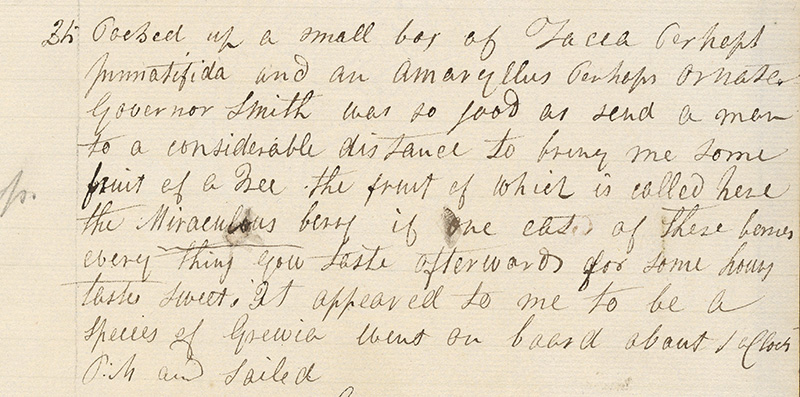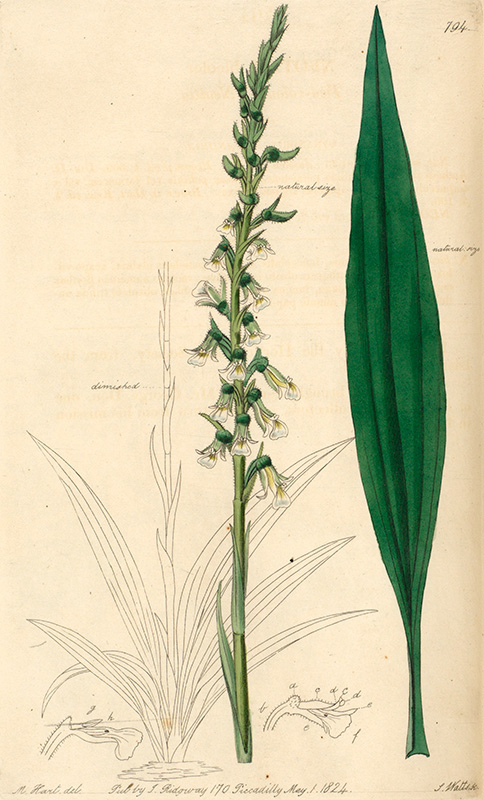Insights into our collections
RHS Plant Collector Archive: George Don
Scottish botanist George Don was the Horticultural Society’s second plant collector. He travelled along the western coast of Africa and the eastern coasts of the Americas in the 1820s.
Who was George Don?
Born in 1798 in Forfar, George Don was the son of the head gardener of the Royal Botanic Garden Edinburgh. Don was the Horticultural Society's second plant collector, and was recruited in 1821 to travel to West Africa and the Americas. Upon his return to England, Don felt that he had been inadequately paid, and published an account of his Sierra Leone travels in the Edinburgh Philosophical Journal instead of writing up his journals for the Horticultural Society. Seeing this as a breach of contract, the Society dismissed him. Don went on to become an author and died in London in 1856 whilst working on Loudon’s Encyclopaedia of Plants. The broadcaster and author Monty Don is a distant relative.
Where did George Don collect plants from?
Don accompanied Captain Edward Sabine, an astronomer and geophysicist, on a voyage to West Africa, eastern South America and the West Indies in 1821-1822. They travelled aboard Royal Navy vessels (HMS Iphigenia, and from Sierra Leone onwards, HMS Pheasant) that were tasked with intercepting slave ships across the British Empire. They visited Madeira, Tenerife, the Cape Verde Islands, Senegal, Gambia, Sierra Leone, Ghana, Benin, São Tomé, Ascension Island, Brazil, Trinidad, Jamaica, Cayman Islands, Cuba and the United States, before returning to England in February 1823.

Map of George Don’s voyage. The place names are those used by Don in his account.
How did George Don collect plants?
Though he rarely acknowledges them in his journals, and never by name, Don was assisted by many local people throughout his journey. They guided him on mountain treks, acted as interpreters and labourers, showed him where to find plants including cinnamon, Amaryllis, Tacca and palm, and sometimes went on collecting missions on his behalf. For example, in April 1822, John Hope Smith, then the British governor of the Gold Coast, sent an unnamed man a “considerable distance” to bring Don the fruit of the Miraculous berry (Synsepalum dulcificum).
These interactions were sometimes characterised by reluctance or resistance on the part of the local people. In one entry, Don recounts a man who initially declining to climb a tree but agreeing when offered a dollar. In another, he describes taking water without permission after locals refused to give it.
As well as recording and collecting wild plants, Don observed plants grown by local people in their gardens and farms and learned about their cultivation techniques. He also noted European plants that had spread to other places along colonial transport routes, including Alsine media [Stellaria media] and Senecio vulgaris in Jamaica.
Plate 794. Neottia bicolor. Edward’s Botanical Register 10 (1824)
What plants did George Don collect?
Although many did not survive the journey, the collection of living plants, seeds, and bulbs that Don brought back for the Horticultural Society's gardens introduced many new species to European cultivation. His herbarium specimens contained a wealth of species, including Allium, Aquilegia, and Rhododendron, many of which were documented by the Secretary of the Horticultural Society, Joseph Sabine.
What is in George Don’s papers at the RHS Lindley Library?
The RHS collection includes three versions of Don’s travel journal: an initial rough version, compiled during the journey, an edited rough version and a final more polished version. The main purpose of all three was to describe the plants that Don observed and collected. There are minor differences between the three which show the process Don went through as he organised his accounts for publication. The papers also include correspondence with the Horticultural Society, plant lists and accounts. The library also holds letters describing the Edward Sabine’s account of the journey, with whom Don was travelling. Sabine’s letters were sent to his brother Joseph Sabine, who was honorary secretary of the Horticultural Society at the time.
This Insight draws upon research carried out by Dr Sarah Easterby-Smith and Dr Elena Romero-Passerin (University of St Andrews) in 2021-2022, commissioned by the RHS.
Discover more
Published
9 May 2025
Insight type
Short read

